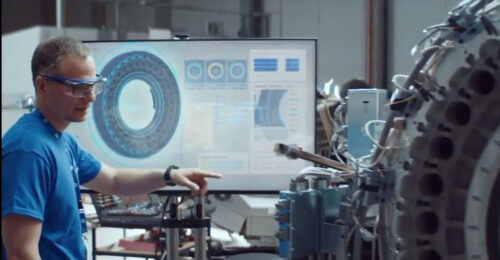Equipment – what’s in a name?
The “information” part of manufacturing IT is as important as the “technology” part. One important element of managed information is the correct identification of the equipment used for manufacturing. Equipment identification is used for scheduling, qualification, tracking and tracing, maintenance, troubleshooting, visualization (HMI), finance, capacity tracking, overal...
The “information” part of manufacturing IT is as important as the “technology” part. One important element of managed information is the correct identification of the equipment used for manufacturing.
Equipment identification is used for scheduling, qualification, tracking and tracing, maintenance, troubleshooting, visualization (HMI), finance, capacity tracking, overall equipment effectiveness and multiple other reasons. Unfortunately, it is not uncommon for a manufacturing company to have four or more different identifications for a single piece of equipment. Therefore, a critical aspect of equipment information management is managing different equipment IDs across multiple vendor systems and applications.
There are two main categories of equipment identification: an identification of the role that the equipment performs, independent of which specific piece of equipment is performing the role; and an identification of the actual physical machine. The latest version of the ISA 95 Enterprise/Control System standard, scheduled for committee vote in early 2008, supports these categories by defining a role-based equipment model and a physical-asset equipment model. The models also show how the two ID categories are related over time, as equipment is replaced during maintenance operations, for example.
Even within these categories there are different identifications. Each physical asset has a vendor serial number, necessary for financial tracking and maintenance contracts. Vendor serial numbers are not unique, so each physical asset is usually given a unique company-specified financial asset tag number. This number is maintained in a financial system and may not be compatible with maintenance system identifications; differences usually are in the number of characters or numbers used and/or the naming rules required by the applications. Therefore, maintenance systems often have a separate maintenance tag that is added to the physical asset. In the case of small equipment, the three separate identification tags and vendor make and model information can cover most of the equipment’s surface area.
SCADA OR HMI systems recognize the role-based identifications of the equipment. These IDs usually correspond to a common functional name or a name documented on a process and instrumentation diagram drawing. Individual pieces of equipment often follow the ISA naming conventions, while collected elements (such as units) follow company-specific naming conventions. Data historians also require equipment identification. While the historian equipment tag names are often the same as the SCADA/HMI names, if systems from different vendors are combined, then IDs can be different. Manufacturing execution system systems will often use the SCADA/HMI names for equipment, but name inconsistencies also can occur because vendors have different ID rules.
ERP logistics systems also identify equipment by role-based identifications for scheduling or planning. These names are rarely the same as the SCADA/HMI names and are often just resource ID numbers used for scheduling purposes. Finally, there may be a custom qualification management system used to maintain the qualification status of equipment for specific products or processes. The scope of all of these IDs varies widely, from a local area scope for an HMI display to the entire company for the financial asset ID.
Managing all of these separate IDs and keeping them consistent as new equipment is added, obsolete equipment is decommissioned and equipment is replaced can be a large task, typically requiring a shared database of IDs or storage in master data management system. However, equipment ID management is a vital aspect of implementing the tracking and tracing functionality required by federal and state regulations and must be part of every manufacturing IT department’s scope of responsibility. Consider using the ISA 95 role-based equipment and physical-asset equipment models as the basis for describing and storing the IDs associated with your production equipment.
| Author Information |
| Dennis Brandl is president of BR&L Consulting in Cary, NC, dbrandl@brlconsulting.com . |
Do you have experience and expertise with the topics mentioned in this content? You should consider contributing to our CFE Media editorial team and getting the recognition you and your company deserve. Click here to start this process.





